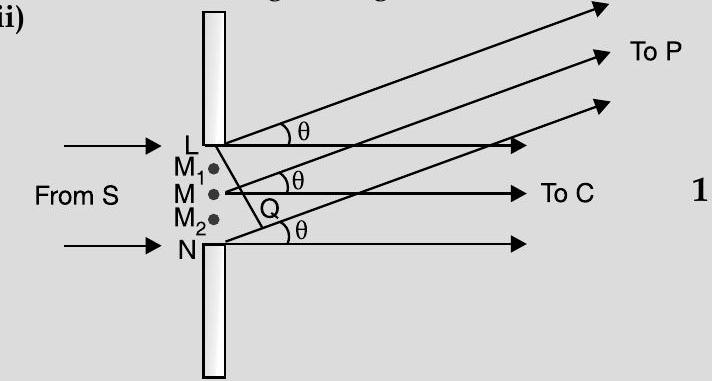wave-optics Question 27
Question: Q. 4. (i) State the essential conditions for diffraction of light.
(ii) Explain diffraction of light due to a narrow single slit and the formation of pattern of fringes on the screen.
(iii) Find the relation for width of central maxima in terms of wavelength ’
(iv) If the width of the slit is made double the original width, how does it affect the size and intensity of the central band?
] [Foreign 2016]
Show Answer
Solution:
Ans. (i) Size of slit/aperture must be smaller than of the
(ii) order of wavelength of light.

Single slit diffraction is explained by treating different parts of the wavefront at the slit as sources of secondary wavelets.
At the central point
At any other point
Any point
This can be explained by dividing the slitinto even number of parts. The path difference between waves from successive parts is
This can be explained by dividing the slit into odd number of parts. The contributions from successive parts cancel in pairs because of
(iii) If
Angular width of central maxima
Linear width of central maxima,
(iv) If ’
[CBSE Marking Scheme 2016]






